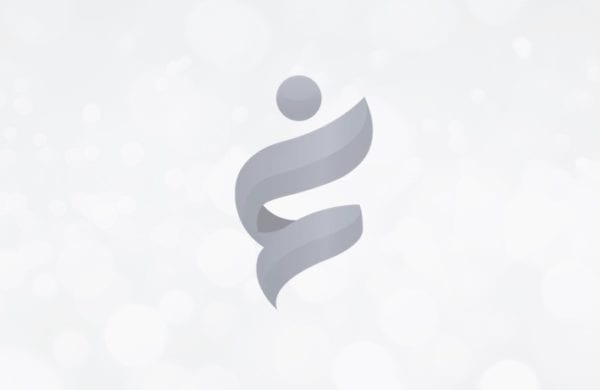
The Human Body From Head To Toe
One of the reasons I was drawn to medicine is that I’ve always been fascinated by the workings of the human body on all its levels. Truly, nothing in nature stands as its equal—flaws and all (and there are a few). So I thought today I’d share just a few of the fascinating facts about the way the human body works that many people don’t know. From the bottom up:
- Feet: The average person walks about 10,000 steps a day. Twenty-five percent of bones in the human body are located in the feet, which are made up of 52 bones. The plantar fascia, or connective tissue, on the bottom of the feet is about the toughest soft tissue in the body and carries approximately 14 percent of the total load of the body with each step. Experiments on cadavers suggest that this fascia can withstand a force of up to 12 g, or 12 times the force of gravity, before it ruptures.
- Knees: All bone comes from the ossification (hardening) of cartilage, but this happens at different rates. Babies, in fact, don’t have kneecaps at all. They have a small piece of cartilage in each knee that eventually turns into their kneecap by about the age of three.
- Liver: The liver has many jobs, most of which are essential for life. If your liver stopped working entirely, you’d die within about 24 hours. (And one thing that can destroy it, after a few day’s delay, is a massive overdose of Tylenol.) It’s the second largest organ in the body, second only to the skin. The liver is the only internal organ that can regenerate itself (as little as 25 percent of the liver can regenerate into a whole new organ). Further, only 10 percent of the liver needs to be functioning in order for blood to clot normally.
- Pancreas: The pancreas makes both insulin and digestive enzymes. It’s a brittle organ in that even ginger handling of it during surgery can cause potentially life-threatening inflammation. You can’t live without a pancreas—not because of the work it does digesting food but because no other organ in the body makes insulin.
- Intestine: More bacteria live in our intestines than there are cells in our bodies. We’re just beginning to understand the benefits of our intestinal flora and what may happen when it’s disturbed. You can’t feel pain in your intestine when it’s cut. You only feel pain when the intestine is distended. The intestine also has its own nervous system (“the enteric nervous system”) whose functions we are only beginning to figure out.
- Stomach: You don’t need your stomach to digest food, but people who’ve had theirs removed must eat frequent small meals or risk regurgitation. Despite the fact that stomach acid is similar in strength to battery acid, the inner lining of the stomach tolerates it with ease.
- Heart: When athletes train, their hearts enlarge to about 500 grams and no larger. Any increase in fitness thereafter comes from an increase in their exercising muscles’ ability to extract oxygen from blood. Hearts that enlarge past 500 grams do so pathologically as a result of heart failure. Your heart beats about 35 million times each year and with each beat contracts with enough strength to shoot blood a distance of up to 30 feet (I have, unfortunately, seen this). Amazingly, all the muscle in the heart together could lift 3,000 pounds! The total length of blood vessels into which the heart pumps blood is approximately 60,000 miles (this figure includes blood vessels all the way down to capillaries). Within 24 hours of quitting smoking, your risk of dying from a heart attack drops by 50 percent.
- Lungs: The lungs have two circulatory systems, one from which it absorbs carbon dioxide and to which it imparts oxygen to be delivered to the tissues of the body by the heart, and another from which it pulls oxygen for its own tissues. We lose half a liter of water every day through breathing. The reason premature babies can’t survive well outside of their mothers’ wombs is because their lungs are often deficient in pulmonary surfactant, which reduces the surface tension in their alveoli (air sacs) and allows the lungs to inflate at the pressures that babies are able to produce.
- Brain: The brain is the pinnacle of evolution, a control center that runs the body above which it sits and which is simultaneously aware of itself doing so. It weighs only three pounds but contains 100 billion neurons, each of which makes about 10,000 connections to it neighbors, which means, according to author and neuroscientist David Eagleman, “there are as many connections in a single cubic centimeter of brain tissue as there are stars in the Milky Way galaxy.” And as many neurons as there are in the brain, there are even more glial cells (1-5 trillion), whose function seems to be to support the functioning of neurons. Among all the facts I know about the brain, this one currently fascinates me the most: according to the work of one of my colleagues, Richard Kraig, thinking represents an aversive stimulus (it creates actual inflammation in the brain) that, if followed by a period of rest, actually strengthens neurons. That is, it makes them more resistant to migraines, seizures, and even dementia.
Obviously, this list barely scratches the surface of this most enigmatic of life forms, ourselves. When I think about how intricate the human body’s systems are and how harmoniously they work together (in health), I find it amazing that we evolved from single-celled organisms. Yet evolve we clearly did. And as often as I see things go wrong, I often find myself marveling, when I think about the incredible complexity of the human body, how often things go right.
Next Week: The Power Of Delaying Gratification

I’ve been reading your weekly blog for a while and enjoy it! I just finished my first year of med school, including gross anatomy of course. I love all of the points you raise—many which I thought about while going through the course, as well as during physiology and neuroscience. The human body is fascinating! And so amazing. And complicated. Thanks for sharing these wonders.
As someone who has undergone detached retinas and cataract removal in both eyes (before the age of 50), I am appreciative not just of the body’s methods for allowing sight (who knew that the lens of the eye is the only transparent tissue in the body?) but of modern medical know-how that can help correct problems that can occur. To me, it’s all a miracle.
Now if I can just do something about this twingey knee 🙂
Fascinating!
You can sure live without a functioning pancreas, as many millions of people living with Type 1 diabetes will remind you. But you can’t live without insulin.
I’m amazed at how blood levels of potassium, sodium, chloride, bicarb, sugar, pH, etc. can actually sustain life for years and years…..considering the considerable abuse the body endures (and the narrow parameters). It is remarkable that those electrical impulses in the heart don’t go haywire more often. WHAT are we? WHY are we? So alike, but very different.
With the nearly unimaginable complexity and efficiency of the human body, I’m perplexed as to how one can believe in the theory of evolution. One cell to what we are now? The presence of a intelligent creator seems more plausible to me.
[…] Read more […]
Hmm…re the brain, depressive brooders, ruminators should not have dementia, you think? 🙂
I belong somewhere there so checking.
Amazing!! Enjoyed every bit of your article!! Amazing evolution!! I loved your conclusion!!
Could you please explain how “connective tissue, on the bottom of the feet … carries approximately 14 percent of the total load of the body with each step”? It seems to me that it would have to carry 100%.